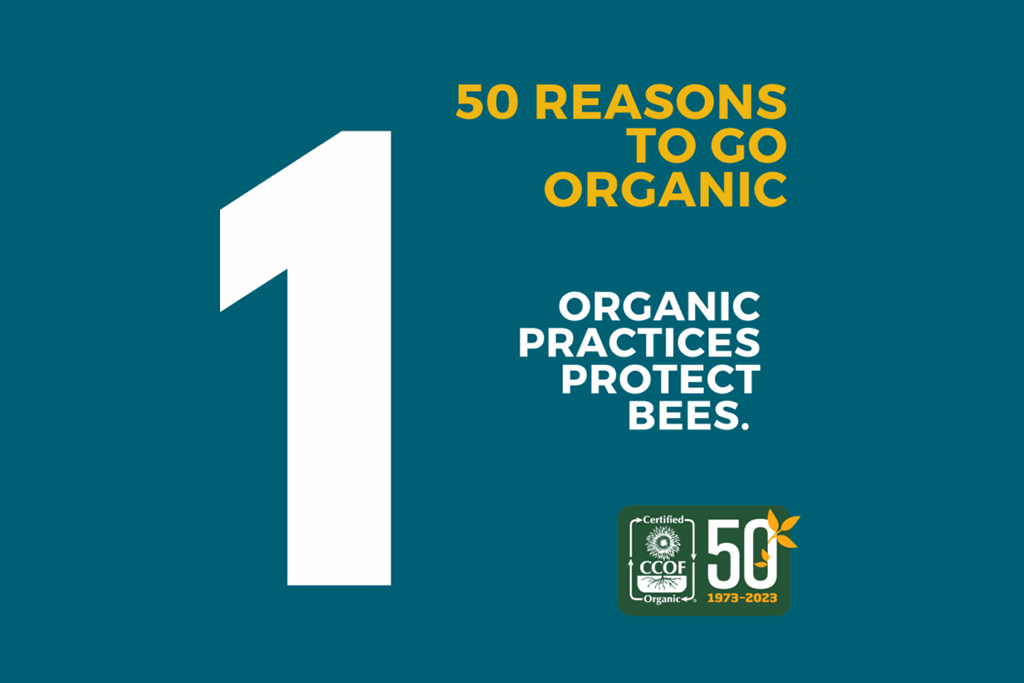To ensure consumer confidence in organic livestock production, CCOF Certification Services is working with other certifiers, including Oregon Tilth, to clarify implementation of the USDA National Organic Program (NOP) Standards as well as additional oversight we are implementing regarding handling organic animals and identification of organic slaughter eligible animals.
Any operation that handles organic animals and represents them as “organic” must be certified per the USDA NOP Standards. You may wish to consult Guidance NOP 5031 and 5031-1. Additionally, to be eligible as organic slaughter stock, livestock must be managed as organic from the last third gestation, and the use of synthetic de-wormers is prohibited. All livestock sold as organic slaughter stock must meet these criteria. CCOF cannot ensure that livestock sold for slaughter are compliant unless there are clear controls and readily auditable and understood systems for identification.
Operations are expected to meet these requirements as soon as possible. Those operations that require a plan for compliance may submit one in writing to CCOF. Full compliance is required by October 1, 2017.
Specifically:
1. Livestock brokers must be certified. Because animals are not packaged goods, operations that sell or handle them must be certified. Certified organic livestock operations are only allowed to purchase organic livestock from other certified organic operations. Uncertified entities may provide transportation services for organic livestock, but may not be involved in the purchase or sale of organic livestock. If you are unsure about a supplier or purchase, it is your responsibility to notify CCOF. All suppliers must be clearly identified on your organic system plan and updated to only show certified entities at your next inspection.
2. Slaughter stock must be visually distinct. Animals eligible for slaughter must have visually distinct identification for those individual animals that meet slaughter stock requirements. The identification system must be maintained by each operation representing the animal for sale. Operations must ensure that only those animals that are eligible for slaughter have this visual identification. These may include tag colors, changeable numbering systems, tag notches or other changes to tags to indicate ineligibility, etc. For organic dairy farmers, this will allow your operation to retain the two classifications of ruminant animals: organic last third of gestation and transitioned. If an animal requires an emergency treatment with a synthetic parasiticide, it would not lose its last third of gestation organic status, rather, the visual indicator of being slaughter eligible would be removed.
3. Organic System Plan (OSP) description: The indicator of slaughter eligible animals must be clearly described as part of the OSP and will be identified on the operation’s client profile. If no system for identifying slaughter eligible animals is established, or is not maintained, slaughter eligible animals will not be identified on the client profile.
4. Animal purchase documentation: CCOF clients must maintain purchase documentation that includes, but is not limited to the following:
- A current organic certificate from the operation who sold the livestock, identifying which types of animals are maintained and how slaughter eligible animals are identified.
- Purchase documents, such as receipts and shipping records that include the seller’s name, date of sale, and the individual animal identification for each certified organic animal purchased and, if applicable, slaughter eligibility ID.
- Payment for the livestock must be made to the producer or handler identified on the valid organic certificate.
- A statement from the seller identifying, by ID number, all animals treated with a synthetic parasiticide and which have not.
5. Animal IDs at sale: Individual animal identification must be fully traceable, and maintained through the supply chain. Approved animal identification methods include:
- Regulatory animal health program tags, such as Bangs tags/USDA Silver Brite tags for Brucellosis in cattle, or Scrapie program tags in sheep.
- Animal identification number tags, with or without RFID technology.
- Breed registry identification numbers.
- Other methods reviewed and approved by CCOF.
6. Transportation by uncertified operations: Uncertified operations may only transport organic livestock. If the CCOF certified operation arranges for the transportation of animals, they are responsible for ensuring that the animals are transported in full compliance with the organic regulations. Transportation records must be made available showing the original location of pick up, number of animals, total travel time on vehicle, and delivery to the final destination. This could include, but is not limited to, copies of travel logbooks or similar documentation.
7. Purchases for slaughter: Purchasers of animals destined for slaughter or that will be marketed for slaughter are responsible for ensuring that all animals accepted into inventory are appropriately identified visually and by documentation as eligible for slaughter.
If the livestock broker you are currently using requires certification, now is a great time for them to seek certification. If you would like to inquire about this process please contact our Applicant Support Team at 831-423-2263, ext. 6240 or by email at getcertified@ccof.org.
